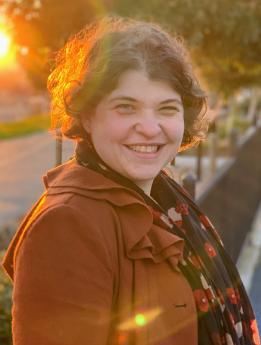Our laboratory is interested in how changes in visual and/or vestibular function affect eye/head coordination, balance, and mobility, particularly in aging. We are currently pursuing two main lines of research: 1. The effects of central visual field loss on eye…

Principal Investigator:
Natela ShanidzeGrant Number: R01EY036172
Grant Period: 2024 to 2029
Source: NIH/NEI
Abstract:
Central visual field loss due to diseases like age-related macular degeneration (AMD) is a large and growing problem, particularly in the elderly. Although much has been done to understand visual limitations associated with this problem in a static context, studies of binocular oculomotor behaviors in a naturalistic context are lacking. As a result, little is known about how those with central field loss (CFL) meet daily demands, such as shifting their gaze between targets in depth, stabilizing images on the retina during linear motion, or coordinating eye and head movements in situations where vestibularly-driven compensatory reflexes are in conflict with visual gaze shifting demands. These essential behaviors, developed to place and maintain the fovea on target, and thus use it as the reference in healthy vision. Deficits in these behaviors become particularly dangerous in the context of mobility and navigation of busy environments, where gaze shifting and retinal stabilization play a key role in preventing stumbling, collisions, and falls – which can lead to injury or be fatal in older adults most affected by AMD. These individuals often do not have a functional fovea, commonly using an eccentric fixational locus that may not be symmetric in the two eyes.
This proposal seeks to address the gap in our understanding of how loss of foveal fixation and acuity, as well as loss of binocular information affects these essential behaviors. The first Aim examines binocular eye movements to targets in depth, looking at not only the capacity for vergence, but also accuracy of the eye movement and depth cues needed to improve gaze placement in individuals with CFL. The world is inherently three-dimensional and understanding how those with central field deficits are able to acquire information can help better understand how challenges posed by known visual deficits are further exacerbated in daily living. The second Aim investigates the interaction of linear motion and retinal stabilization of targets at different depths. We will use fore-aft motion that emulates translations during forward walking to test individuals’ ability to stabilize objects at different viewing eccentricities and depths. The experiments in this Aim are the first of their kind and will explicitly address the capacity for retinal stabilization during linear motion in CFL. The findings can inform specific training and rehabilitation strategies to reduce instability and falls. The final Aim examines the capacity for cancellation of the vestibuloocular response (VOR) when it is in conflict with visually-driven oculomotor demands. When the head moves, the VOR counterrotates the eyes to maintain retinal stability. However, when an individual uses the head and eyes to track or visually acquire a target, the VOR can pull the eyes away from the object of interest. If deficient, head movements become disadvantageous, suggesting a different set of strategies for gaze shifting in CFL. Combined, these experiments could have significant implications on how individuals with CFL are advised and trained to interact with their environment while maintaining an active and productive lifestyle.
Health Relevance:
Central field loss due to age-related macular degeneration is highly prevalent, debilitating, and can lead to accidents and injury. The individuals’ decreased visual acuity and inability to correctly make compensatory eye movements and exploratory gaze shifts make performing daily tasks such as navigating a crowded street very difficult and even dangerous. This proposal investigates how loss of central vision affects individuals’ ability to look between objects in depth, stabilize objects on the retina during linear motion (e.g., walking), and coordinate eye and head movements to resolve oculomotor conflicts to appropriately meet gaze-shifting demands.
Disclaimer:
Research is supported by the National Eye Institute of the National Institutes of Health under Award Number R01EY036172. The work is solely the responsibility of the PI and does not necessarily represent the official views of the National Institutes of Health.

